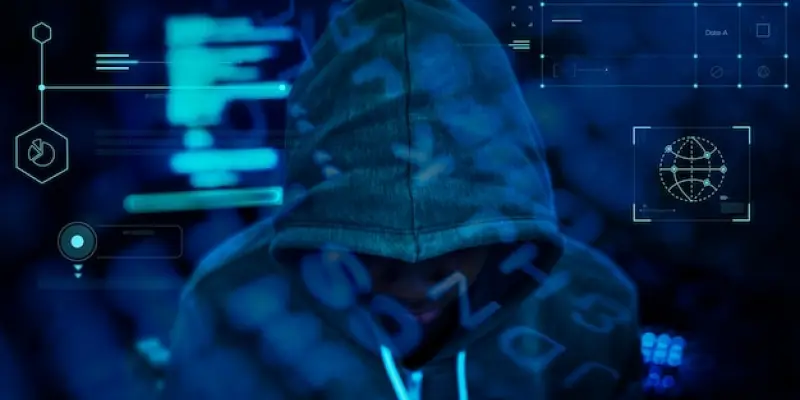The increasing sophistication of ransomware attacks is a growing concern for both individuals and organizations. Recent developments in Bring Your Own Vulnerable Driver (BYOVD) tactics have set a precedent for a new breed of cybersecurity threats. With the Medusa ransomware group leveraging these advanced approaches, traditional cybersecurity measures are now facing unprecedented challenges. This article delves into how these innovative tactics are reshaping the future landscape of cybersecurity threats.
The Rise of BYOVD Attacks in Ransomware Operations
The Medusa ransomware-as-a-service (RaaS) operation has introduced a novel approach by utilizing malicious drivers to disable endpoint detection and response (EDR) systems. These drivers, often signed with stolen certificates from Chinese vendors, help ransomware attacks circumvent security measures by masquerading as legitimate software. This tactic is not only intriguing but represents a significant shift in the methodologies employed by ransomware operators.
Elastic Security Labs recently observed a Medusa attack involving the ABYSSWORKER driver, which performs various malicious activities such as file manipulation and process termination. This strategy essentially undermines the effectiveness of conventional anti-malware tools. By directly deactivating these tools, Medusa can deliver its ransomware swiftly and efficiently. The rise of BYOVD tactics signifies a disturbing shift towards more sophisticated and covert ransomware operations, posing new challenges for cybersecurity defenses.
Techniques and Tools: Delving into Medusa’s Arsenal
ABYSSWORKER employs an array of specific I/O control codes, which allow it to execute critical operations like deleting files, terminating processes, and disabling security callbacks. One particularly potent code, 0x222400, is used to remove all registered notifications within EDR systems. This technique mirrors other advanced EDR-disabling tools, granting the ransomware a significant advantage in evading detection.
Additionally, Medusa’s tactics include the use of a driver that mimics legitimate security software, such as the CrowdStrike Falcon driver. This strategy not only disables security measures but also conceals the attack under the guise of trusted software. The combination of deception and technical proficiency highlights the increasing complexity of these ransomware operations. Understanding the arsenal of tools and techniques used by groups like Medusa is essential for developing effective countermeasures against such sophisticated threats.
Vulnerable Drivers: A Gateway for Elevated Privileges
A prime example of BYOVD in action is the exploitation of an outdated driver associated with Check Point’s ZoneAlarm antivirus software. This vulnerability provided attackers a gateway to gain elevated privileges and disable critical Windows security features, such as Memory Integrity. While Check Point has since resolved this issue, the incident underscores the ongoing risks posed by vulnerable drivers.
Cybercriminals constantly search for such weaknesses to exploit, neutralizing defenses, and establishing persistent access to systems. This exploitation not only facilitates the initial compromise but also maintains control over infected machines. The use of outdated drivers as a tactic illustrates the broader trend of leveraging legitimate yet vulnerable software to bypass security measures. This approach necessitates stringent security practices to defend against such exploitation.
The Evolution of Ransomware Tactics
The adoption of innovative strategies is not limited to the Medusa group. Other ransomware operations, like RansomHub (also known as Greenbottle and Cyclops), are continuously evolving to stay ahead of cybersecurity defenses. RansomHub’s deployment of a multifunction backdoor named Betruger exemplifies this trend, as they shift toward tools that minimize their footprint while maximizing their impact.
Betruger possesses capabilities such as keylogging, screenshotting, and privilege escalation, which mark a shift towards reducing reliance on multiple tools. This streamlined approach significantly increases the chances of remaining undetected during infiltration. The backdoor’s multifunctionality reflects a broader trend in the ransomware landscape, where advanced malware aims to optimize resource use and remain obfuscated. This evolution in strategy signifies the increasingly sophisticated nature of cyber threats.
Implications and Defensive Measures
The sophisticated use of BYOVD tactics by ransomware groups has profound implications for cybersecurity defense strategies. Traditional detection and response methods are being circumvented, necessitating a shift toward more proactive and adaptive security measures. Organizations must prioritize maintaining up-to-date systems and security protocols while investing in advanced detection mechanisms.
Continuous monitoring for signs of BYOVD activity and implementing robust incident response plans can help mitigate these dynamic threats. Additionally, the detection and immediate patching of software vulnerabilities, coupled with comprehensive employee training, become critical in defending against these evolving attack vectors. The exploration of novel and adaptive defensive measures is key to countering the sophisticated methodologies employed by modern ransomware groups.
Adapting to a Changing Threat Landscape
The growing complexity of ransomware attacks is becoming increasingly alarming for both individuals and organizations. Recently, the development of Bring Your Own Vulnerable Driver (BYOVD) tactics has introduced a new level of cybersecurity threats. The Medusa ransomware group is now using these sophisticated methods, posing substantial challenges to traditional cybersecurity defenses. These advanced tactics are setting the stage for future cybersecurity threats, creating a more dangerous and unpredictable environment. As ransomware actors continue to evolve, it is crucial to understand how these cutting-edge techniques are transforming the cybersecurity landscape. This article explores the impact of these innovative practices, providing insights into what the future holds and how to better prepare against such threats. The urgency to adapt and enhance current security measures has never been more critical, necessitating a proactive approach to safeguard against these emerging dangers.

